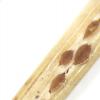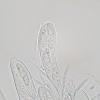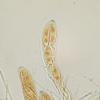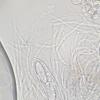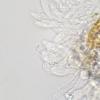
08-01-2026 21:22
 Blasco Rafael
Blasco Rafael
Hola, He recogido esta muestra de Orbilia sobre Re

07-01-2026 10:24
 Danny Newman
Danny Newman
Pezicula sp. on indet. hardwood Appalachian Highl

07-01-2026 22:22
 Danny Newman
Danny Newman
Tatraea sp. on indet. hardwood The Swag, Great Sm

07-01-2026 17:29
 Marc Detollenaere
Marc Detollenaere
Dear Forum,On a barkless Populus I found some smal

10-11-2021 17:33
 Riet van Oosten
Riet van Oosten
Add-on topic http://www.ascofrance.com/forum/7059

07-01-2026 10:05
 Danny Newman
Danny Newman
cf. Chaetospermum on XylariaCosby Campground, Grea

02-01-2026 17:43
MARICEL PATINOHi there, although I couldn't see the fruitbody, I

04-01-2026 17:45
 Stephen Martin Mifsud
Stephen Martin Mifsud
I was happy to find these orange asmocyetes which
Discomycete on leaves of Eriophorum vaginatum
Marcus Yeo,
06-08-2022 22:20
Apothecia are erumpent; elongated; with an orange-brown hymenium.
Asci are clavate; ca 120-160 x 13-18 µm; 8-spored (though in some asci not all spores have developed fully); IKI+ blue.
Ascospores are all in asci; hyaline; ellipsoid; 0-septate; 21-27 x 8-9 µm; with scattered small OBs & a couple of medium-sized OBs.
Paraphyses are filiform; 2 µm wide; sparsely branched.
Marginal cells are cylindrical to clavate; ca 25-35 x 5-7 µm.
Thanks
Marcus
Brian Douglas,
09-08-2022 02:27
Re : Discomycete on leaves of Eriophorum vaginatum
Hysteronaevia kobayasii seems rather similar (host, spore dimensions and and usually only four ascospores reaching maturity). Though yours has a blue apical ascus pore in Lugol's.
Has anyone else seen this in recent decades?
Has anyone else seen this in recent decades?


